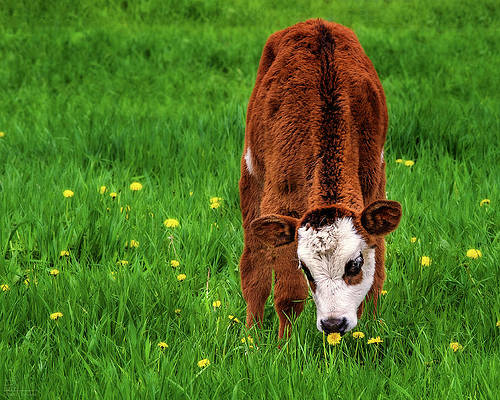Like humans, cows have a gestation period of 270 days, or nine months. When a baby cow, or calf, is born typically in a pasture, it doesn’t eat grass right away. Instead, calves nurse for about six weeks. Then these young animals begin consuming grass in addition to their mother’s milk. The more grass that calves eat, they less they need to nurse.
Farmers want their calves to have enough grass, so they need to consider the condition of their pastures and when grass begins to grow. As we’ve seen previously, younger grass is supple, digestible, full of nutrients, and easy to graze. Typically, calves begin to nurse less and eat more grass when they’re about two months old. You might say that timing is everything.

Here in the southern United States where Go Natural is located, grass starts growing around the end of March. Therefore, calves are usually born at the end of January. To time calving accordingly, farmers turn-in, or introduce their bulls with their cows nine months before, in June or July. The cows are bred within two estrous cycles, the period from one ovulation to a subsequent ovulation.
Typically, a cow’s estrous cycle lasts around 21 days, although this amount can and does vary. That’s similar to the estrous cycle in humans, and it’s worth noting that all milk contains some amount of the hormone estrogen. Calves grow faster and larger than human babies, of course, and they put on considerable weight until the grass stops growing, typically the end of October in the southern U.S.

When a young cow reaches 400 pounds, an industry standard known as the weaning weight, it’s separated from its mother and kept in a separate pasture or pen. It takes some time for these young cows to adjust, but they generally do so before the next stage of their life’s journey. It’s at this point that the cows are shipped to the feedlot: the subject of our next article.